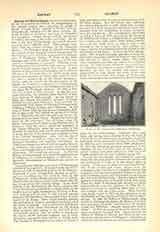

Gama, VASCO DA, the discoverer of the sea route to the East Indies; b. at Sines, Province of Alemtejo, Portugal, about 1469; d. at Cochin, India, December 24, 1524. His father, Estevao da Gama, was Alcaide Mor of Sines, and Commendador of Cereal, and held an important office at court under Alfonso V. After the return of Bartolomeu Dias, Estevao was chosen by Joao II to command the next expedition of discovery, but, as both died before the project could be carried into execution, the commission was given by Emanuel I to Vasco, who had already distinguished himself at the beginning of the year 1490 by defending the Portuguese colonies on the coast of Guinea against French encroachments. Bartolomeu Dias had proceeded as far as the Great Fish River (Rio do Infante), and had in addition established the fact that the coast of Africa on the other side of the Cape extended to the northeast. Pedro de Covilhao on his way from India had descended the east coast of Africa as far as the twentieth degree of south latitude, and had become cognizant of the old Arabic-Indian commercial association. The nautical problem, therefore, to be solved by Vasco da Gama was clearly outlined, and the course for the sea route to the East Indies designated. In January, 1497, the command of the expedition was solemnly conferred upon Vasco da Gama, and on July 8, 1497, the fleet sailed from Lisbon under the leadership of Vasco, his brother Paulo, and Nicolao Coelho, with a crew of about one hundred and fifty men. At the beginning of November, they anchored in St. Helena Bay and, on the 25th of the same month, in Mossel Bay. On December 16, the fleet arrived at the furthest landing-point of Dias, gave its present name to the coast of Natal on Christmas Day, and reached by the end of January, 1498, the mouth of the Zambesi, which was in the territory controlled by the Arabian maritime commercial association. Menaced by the Arabs in Mozambique (March 2) and Mombasa (April 7), who feared for their commerce, and, on the contrary, received in a friendly manner at Melinda, East Africa (April 14), they reached under the guidance of a pilot on May 20, their journey’s end, the harbor of Calicut, India, which, from the fourteenth century, had been the principal market for trade in spices, precious stones and pearls. Here also as elsewhere, Gama skillfully surmounted the difficulties placed in his way by the Arabs, in league with the Indian rulers, and won for his country the respect needful for the founding of a new colony.
On October 5, 1498, the fleet began its homeward voyage. Coelho arrived in Portugal on July 10, 1499; Paulo da Gama died at Angra; Vasco reached Lisbon in September, where a brilliant reception awaited him. He was appointed to the newly created post of Admiral of the Indian Ocean, which carried with it a high salary, and the feudal rights over Sines were assured to him. In 1502 Gama was again sent out, with his uncle Vicente Sodre and his nephew Estevao, and a new fleet of twenty ships, to safeguard the interests of the commercial enterprises established in the meantime in India by Cabral, and of the Portuguese who had settled there. On the outward voyage he visited Sofala (East Africa), exacted the payment of tribute from the Sheikh of Kilwa (E. Africa), and proceeded with unscrupulous might, and even indeed with great cruelty, against the Arabian merchant ships and the Samudrin (or Zamorin) of Calicut. He laid siege to the city, annihilated a fleet of twenty-nine warships, and concluded favorable treaties and alliances with the native princes. His commercial success was especially brilliant, the value of the merchandise which he brought with him amounting to more than a million in gold. Again high honors fell to his share, and in the year 1519 he received instead of Sines, which was transferred to the Order of Santiago, the cities of Vidigueira and Villa dos Frades, resigned by the Duke Dom Jayme of Braganza, with jurisdiction and the title of count. Once again, in 1524, he was sent to India by the Crown, under Joao III, to supersede the Viceroy Eduardo de Menezes, who was no longer master of the situation. He reestablished order, but at the end of the year he was stricken by death at Cochin. In 1539, his remains, which up to that time had lain in the Franciscan church there, were brought to Portugal and interred at Vidigueira. To commemorate the first voyage to India, the celebrated convent of the Hieronymites in Belem was erected. A large part of the “Lusiad” of Camoens deals with the voyages and discoveries of Vasco da Gama.
OTTO HARTIG.

